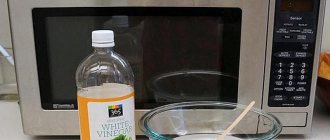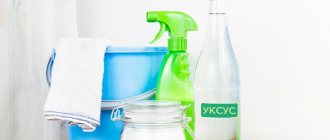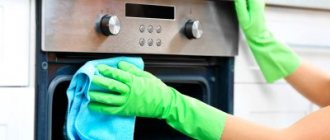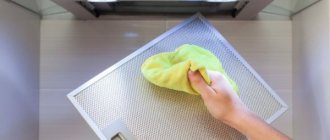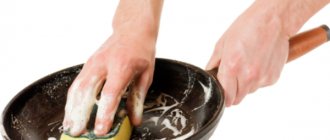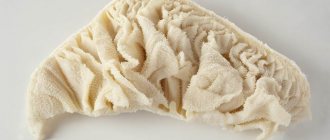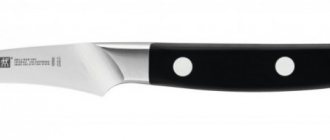Periodic cleaning of the inside surface of the microwave is a prerequisite for its operation.
Cooking food and heating ready-made dishes in a microwave oven leads to the appearance of contamination. You can carry out high-quality cleaning not only using purchased products, but also using folk recipes, for example, based on lemon.
We'll talk about how to clean a microwave with lemon below.
Instructions
The quality of cleaning largely depends on the correctness of the work carried out. Treatment can be carried out not only inside, but also outside.
Inside the microwave oven
To clean, you need to first prepare:
- 1 large lemon;
- water (0.5 l.);
- napkins or rags;
- glass bowl or bowl that can be used in a microwave oven.
Work order:
- Pour enough water into the container so that it is ½ full.
- Cut the lemon into 2-4 parts.
- Squeeze the juice from the fruit into the water.
- Cut the peel of the fruit and add it to the bowl.
- Place the bowl in the oven for 5 minutes.
- After finishing the process, do not open the door for another 5 minutes so that the resulting steam has a better effect.
- Open the door.
- Clean the inside with a wet cloth.
- Wipe surfaces dry.
A nice bonus is filling the entire room with a fresh citrus aroma.
This video will show you how to clean a microwave with lemon:
Treatment of internal surfaces with the addition of soda
Not only lemon can be used to clean the microwave. Combining it with baking soda gives good results.
For processing you need to prepare:
- lemon;
- soda;
- water (0.5 l.);
- napkins;
- hydrogen peroxide;
- glass container.
Work order:
Pour water into a glass container.- Add a large spoonful of baking soda.
- Squeeze lemon juice into water and baking soda.
- Cut the fruit peel and add it to the container.
- Place the bowl in the microwave oven.
- Turn on the mode for 5 minutes.
- Leave the door closed for another 5-10 minutes.
- Open the door.
- Take out the container.
- Wipe the inner surface with a damp cloth or rag soaked in hydrogen peroxide.
- Wipe dry.
Outside
On the outside, cleaning will be effective if you use either citric acid or lemon.
If acid powder is used, then for work you need to prepare in advance:
- citric acid (1 tbsp);
- napkin;
- bowl;
- water.
Work order:
- Pour a glass of water into a container.
- Pour citric acid into water.
- Stir until the powder dissolves.
- Soak a napkin in the solution.
- Wring out the napkin so that water does not run off it.
- Wipe surfaces, periodically wetting and wringing out the cloth.
- Dry.
If lemon is chosen as a cleaning agent, then the surfaces of the microwave can be wiped with freshly squeezed juice.
The role of lemon juice when cleaning the microwave
Lemon has shown invaluable help in the fight against pollution: it cleanses, disinfects and refreshes. It is universal and effective in the fight against fat and microbes. The environmental benefits of cleaning with lemon cannot be underestimated: the possibility of harmful substances entering during the further use of kitchen utensils disappears.
What is the effectiveness of cleaning a microwave with lemon:
- Firstly, disinfection is achieved using lemon juice. During evaporation, bacteria are destroyed and unpleasant odors are neutralized.
- Secondly, when a liquid based on citrus (juice and zest) is heated, steam containing organic acids is released. With a skillful symbiosis of citrus fruits and additional natural ingredients, you will get a homemade composition that will remove even hopeless contaminants. All that remains is to clean the surface with a cloth. It is worth understanding that the device itself provides significant assistance in cleaning. You won't be able to clean the outside using steam.
- Thirdly, with the help of citrus fruits you can not only clean, but also scent surfaces. The aroma that fills the kitchen will be a pleasant bonus for cleanliness and disinfection.
To prepare a homemade lemon-based solution, you do not need to purchase expensive ingredients. All cleaning products consist of readily available ingredients that are constantly present in the kitchen. The transformation process should also not cause difficulties. Even a child can clean a microwave with lemon: the methods are safe to implement (you will need help in removing a hot plate) and harmless from the composition.
Advantages and disadvantages of application
Like any cleaning product, lemon has its pros and cons.
The obvious advantages include:
- natural composition;
- pleasant aroma during the cleansing process;
- health safety.
But there were some downsides too:
- Lemon may not be able to cope with old stains;
- The method cannot be used frequently, as it can damage the enamel inside the chamber.
If other ingredients are added to lemon juice, the smell may become unpleasant and acrid.
How to remove odor
To remove odor from a microwave oven, choose any of the following methods:
- Leave a plate of salt inside the stove overnight - spread it in a thick layer. If you add activated carbon instead of salt, the effect will increase.
- Place lemon slices in a bowl of water and leave for 10 minutes. After switching off, wipe the surfaces.
By regularly washing your microwave, you will extend its service life, protect yourself from unpleasant situations and prevent the appearance of unpleasant odors.
Citric acid or lemon: what to choose?
Lemon and citric acid can be used to clean the microwave. Both of these products are effective in washing away dirt, but have significant differences in their composition.
Lemon juice contains ascorbic and citric acid, which impart a sour taste. In addition, the composition contains other components, including essential oils that have a bactericidal effect. After the treatment, the surface not only becomes clean, but is also disinfected in a way that is safe for health.
Store-bought citric acid is a product that is a chemical compound. It also tastes sour. Both citric acid and lemon juice wash away grease and dirt well. They can be used together or separately.
To clean microwave ovens, you can use either citric acid or fresh lemon. Canned lemon juice is not suitable for this .
Advantages of the method
Since ancient times, people have become accustomed to perceiving lemon as a remedy used to get rid of colds and heal wounds.
Thanks to its antibacterial properties and wonderful aroma, the fruit has become widespread in cosmetology and cooking.
Citrus contains malic, citric and other organic acids, which allow the fruit to be used as a cleaning agent for appliances, furniture, carpets, glass and mirrors.
Have you already cleaned your microwave with lemon?
Not really
Using fruit to remove stains instead of chemicals has a number of advantages:
- disinfection : even fruit juice diluted with water quickly neutralizes various viruses and bacteria (staphylococcus, streptococcus, salmonella, diphtheria bacillus, typhoid bacterium, mold fungi and others);
- environmental friendliness : treating kitchen appliances, dishes and other household items that come into contact with food with citrus juice is absolutely safe for human and animal health.
ATTENTION! Another “advantage” of using lemon as a cleaning product is that surfaces treated with it retain a pleasant aroma of freshness and cleanliness for a long time.
Alternative folk remedies
In addition to lemon and citric acid, there are other folk methods for cleaning microwave ovens. These methods are based on the use of products that are already available in the household.
Table vinegar
Using table vinegar to clean kitchen surfaces is a common cleaning method. You can also use it to keep your microwave clean.
For processing you will need:
- vinegar 9% - 2 large spoons;
- water – 0.5 l.;
- microwave container.
Procedure:
Pour the vinegar into the prepared container.- Add water.
- Place the container in the microwave.
- Set the timer for 2-5 minutes, taking into account the degree of contamination.
- After the microwave oven has turned off, wait another 5 minutes.
- Remove the container with the solution.
- Wipe the inner surface with a cloth soaked in a vinegar solution.
- Wipe dry.
When cleaning using this method, it is recommended to open the window and ensure good ventilation in the room.
Dishwashing gel
If the dirt in the chamber is not significant, then dishwashing gel will help to cope with it.
For processing you will need:
- dish gel;
- water;
- sponge.
Procedure:
- Soak the sponge in water.
- Squeeze.
- Apply a drop of dish soap to the sponge.
- Lather it by squeezing and unclenching the sponge several times.
- Place the sponge in the microwave oven chamber.
- Set the timer for 0.5 minutes. at minimum power.
- Open the door.
- Wipe the interior surfaces with the same or another sponge.
Do not allow the sponge to begin to melt.
Glass liquid
To work you will need a glass cleaner, a sponge and water . First you need to dilute the drug with water in a ratio of 1:2. Wet the sponge and treat the inner surface of the camera and body. If there are dried deposits, you can soak them for a few minutes and only then rub them with a sponge.
Dishwashing liquid
This option is suitable for small stains. A non-metallic sponge soaked in water and detergent is foamed and placed in the oven for half a minute. Power is minimal. The door is opened immediately after finishing work. Take out a sponge and scrub the contaminated surfaces - softened fat is removed much easier.
Laundry soap. You will have to work with a foam sponge - apply soap to it and thoroughly foam it. Surfaces covered with a layer of fat are treated with foam and wait half an hour. Then rinse with water - take another sponge, clean. Then wipe dry.
Top 3 special household chemicals
Manufacturers of household chemicals offer a wide selection of microwave cleaning products.
Mr. Chister
The product is presented in the form of a spray . The drug copes even with old stains from fat and food residues in a matter of minutes. Mr. Chister is suitable for cleaning grills, ovens, stoves and microwave ovens. Bottle volume – 500 ml. Cost – from 130 rubles. Read reviews here, here and here.
WPRO
The cleaner is gentle on surfaces, while effectively washing away food and other contaminants from the inside and outside. WPRO has an antibacterial formula that is safe for health. Container volume – 500 ml. Cost – from 650 rubles.
HG
The product from HG is designed for effective cleaning of microwave ovens. Suitable for both daily use and for removing complex stains . Use is simple and convenient. Packaging volume – 500 ml. The cost of the goods is from 350 rubles. Read reviews here.
Initial cleaning stage
When starting cleaning, follow a few simple rules:
- Disconnect the equipment from the power supply. That is, just remove the plug from the socket.
- Do not use steel wool or brushes to clean the inside of equipment. They may scratch the surface, causing the microwave oven to not function properly.
- During cleaning, you should not use a large amount of water, so as not to accidentally flood important elements of the equipment, which will affect its further operation.
- Do not use aggressive detergents or household chemicals for cleaning.
If dirt gets inside the microwave oven, do not try to disassemble it yourself. This can lead to serious damage, making the appliance unusable for cooking.
Recommendations
To make your microwave last longer, it is recommended to put into practice the following expert advice:
- For use in the microwave, it is advisable to use special dishes.
- Abrasives should not be used for cleaning, either inside or outside.
- After each cooking or heating of food, it is advisable to wipe the inside of the chamber, preventing fat and other food particles from drying out.
- Cleaning the outside of the chamber is carried out when the oven is disconnected from electricity.
Measures to prevent contamination in microwave ovens
Preventing microwave contamination makes it easier to use and extends the life of the appliance:
- Clean the microwave at the first sign of contamination. It is advisable to do this at least once every 2 weeks;
- If during cooking or heating food there are dirty stains on the inner surface of the oven, it is better to remove them without waiting for them to dry;
- Buy special lids for use in microwave ovens and cover the dishes with them during cooking. This will avoid splashing fat and pieces of food on the walls of the microwave;
- After cooking, leave the appliance door open for 20–30 minutes. Ventilation will remove excess moisture and unpleasant odors inside the microwave.
When the first microwave oven appeared in my house, I thought that it needed to be washed once every 2-3 months. Due to infrequent use, the microwave seemed clean. A month after purchasing it, I saw in the newspaper a method of cleansing using lemon water and decided to try it. I was surprised by the result, and under the glass tray I found a surprise from my “neat” husband. Since then, I’ve been trying not to delay washing household appliances, and lemon is my favorite remedy.

